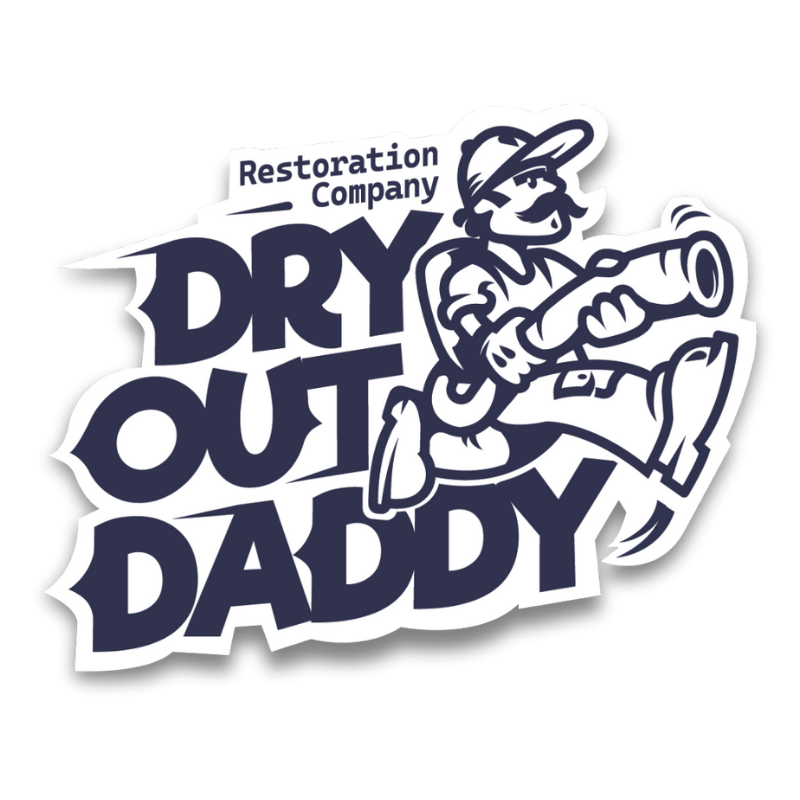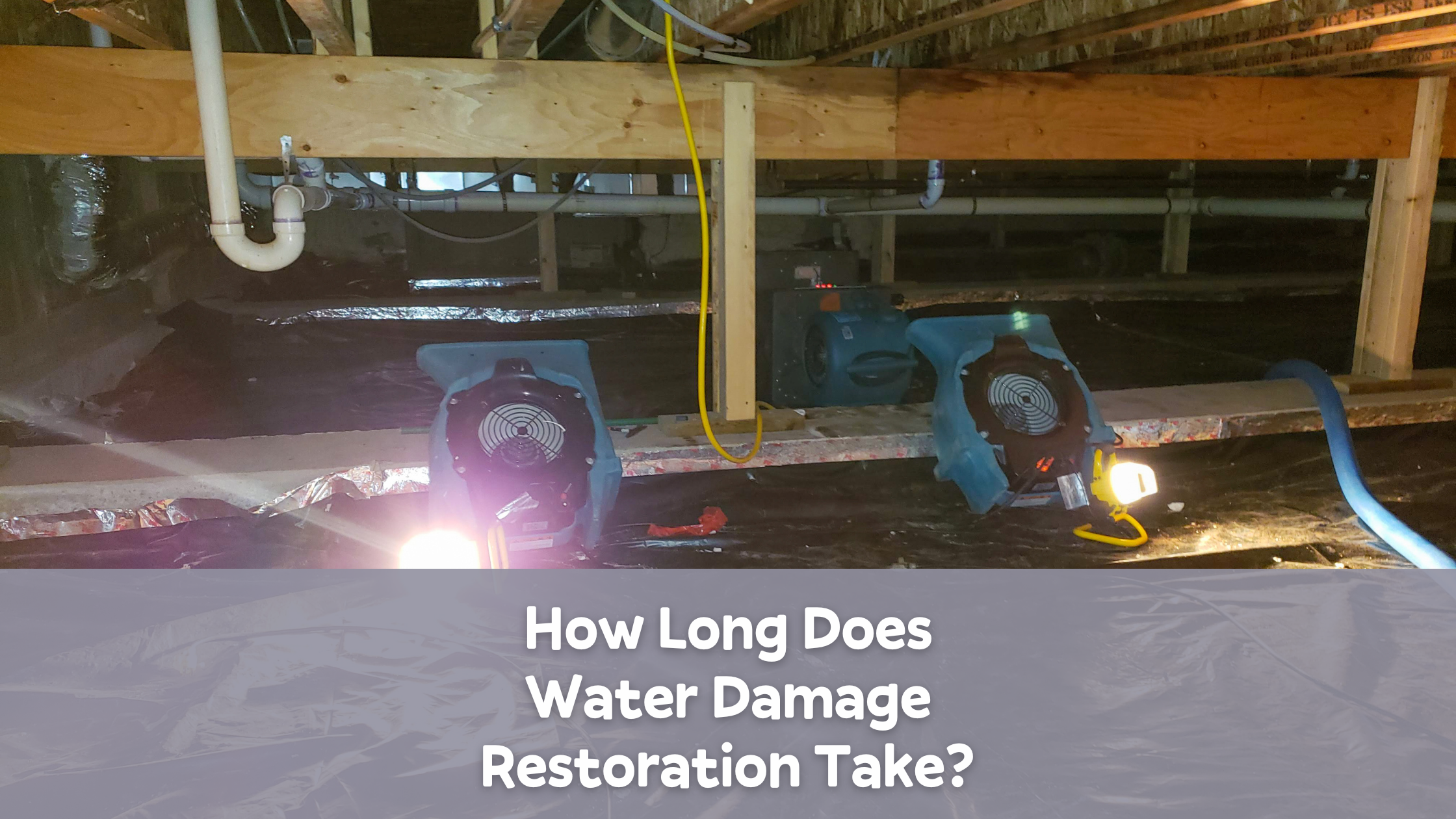Water damage can be a nightmare for homeowners, leading to costly repairs and significant disruptions. But how long will the restoration process take? How quickly can your home be up and running again?
Below, we’ll explore the water restoration damage timeline and explain how professionals tackle key issues when fixing your home.
How Long to Restore Water Damage?
The time it takes to restore your home varies depending on the severity of the damage and the restoration methods employed.
Minor damage from a leaking pipe might only take a few days to repair, while extensive flooding could take several weeks, making it crucial to act quickly to minimize damage and prevent mold growth.
Common Restoration Methods
Common restoration methods include water extraction, drying, and dehumidification. Here’s a quick explainer of how each process works:
- Extraction involves removing standing water using pumps and vacuums.
- Drying techniques, such as air movers and dehumidifiers, are then used to remove moisture from the air and surfaces.
- Dehumidification helps prevent mold growth and further damage.
Restoration professionals may also use disinfectants and antimicrobial treatments to sanitize affected areas and prevent mold and bacteria growth.
Moreover, restoration may involve repairing or replacing damaged materials such as drywall, insulation, and flooring.
Factors that Cause Water Damage
Understanding the factors that cause water damage can help you prevent future incidents, potentially saving you thousands of dollars in costly repairs. Here are some of its common causes:
- Weather conditions: Severe weather events such as heavy rain, hurricanes, and snowstorms can lead to flooding. Poorly maintained roofs, windows, and foundations can also exacerbate the problem.
- Pre-existing plumbing issues: If your home has previous plumbing issues, it may be more vulnerable to damage. Cracks in pipes and blocked drainage systems can become major problems if left unattended.
- Appliance malfunctions: Household appliances, including dishwashers, washing machines, and water-based heaters can malfunction and cause floods. Inspect these appliances regularly and replace any worn or damaged parts to prevent leaks.
- Sewer backup: Sewer backups can occur due to blockages in the sewer lines, causing wastewater to back up into your home.
- Foundation cracks: Cracks in your home’s foundation can allow water to seep into your basement or crawl space. This can cause structural issues and needs to be addressed immediately.
- Poor drainage: Improper drainage around your home can lead to water pooling near the foundation, increasing the risk of flooding.
- HVAC Issues: Differences in your home’s internal temperature can lead to excess moisture forming in your HVAC unit. If this moisture gets into drywall or drips onto carpets, it can cause gradual but significant damage to your home.
How to Prevent Your Home From Flooding
Maintain Your Gutters and Downspouts
Proper maintenance of your gutters and downspouts is crucial to prevent water damage and flooding in your home. Here’s how to do it:
- Inspect your gutters frequently: Cracks in your gutters are a bad sign. Rust and mold growth are also worrisome. Contact a specialist to learn if you’ll need to repair or replace them.
- Clean your gutters: Regularly clean your gutters and remove any leaves, twigs, and debris that could block the flow of water. This will prevent it from overflowing and damaging your roof, walls, and foundation.
- Install downspout extensions: Ensure that your downspouts extend at least 5-10 feet away from your home’s foundation to direct liquids away from your home.
- Consider gutter guards: Gutter guards can help prevent debris from clogging your gutters, reducing the need for frequent cleaning.
Install Flood Sensors
Installing flood sensors in key areas of your home can provide early warning of potential flooding. These sensors can detect rising water levels and alert you via an alarm or notification, allowing you to take action before significant damage occurs.
Flood sensors are especially useful in basements, laundry rooms, and near water-based heaters or other appliances prone to leaks.
Regularly Inspect (and Repair) Your Roof
Regularly inspecting your roof for damage and promptly repairing any issues can prevent water from leaking into your home. Look for missing or damaged shingles, cracked flashing, or signs of water damage on your ceiling.
Addressing these problems early can help maintain the integrity of your roof and prevent costly repairs in the future.
Install a Sump Pump
Upgrading your basement with a sump pump can help prevent flooding by removing excess water from the area.
Sump pumps are installed in a pit below the basement floor, where water can collect. The pump removes excess liquid to the outside, away from your home’s foundation.
Sump pumps are especially useful in areas prone to flooding or homes with a history of basement flooding issues.
Elevate Appliances and Electrical Systems
To protect appliances and electrical systems from flooding, consider elevating them above potential water levels.
For appliances like washers, dryers, and water heaters, placing them on platforms or stands can reduce the risk of damage during a flood.
Similarly, elevating electrical systems, such as sockets, switches, and circuit breakers, can prevent them from being submerged in water. These simple measures can help safeguard your appliances and electrical systems against flood damage.
What Should I Do After Water Damage?
After discovering water damage in your home, it’s essential to take immediate action to prevent further damage and ensure a successful restoration process.
Here’s an action plan for tackling the problem.
1. Assess the Situation
Begin by assessing the extent of the water damage. Determine the source of and whether it is safe to enter the affected area.
If there is standing water, turn off the electricity to prevent the risk of electric shock.
2. Call a Professional
Contacting a reputable home restoration professional right away is crucial.
Water damage experts have the know-how and equipment to assess the damage accurately and develop a restoration plan. They can also help you navigate the insurance process and ensure that your home is restored to its pre-damaged condition.
3. Perform a Quick Cleanup
While waiting for the professionals to arrive, you can begin the cleanup process by removing any standing water with a wet/dry vacuum.
Be sure to remove wet items such as furniture, carpets, and rugs from the affected area to prevent further damage and mold growth.
Remember, no matter how many steps you take, acting quickly is key to minimizing damage and ensuring a successful restoration process.
What Should I Look for in a Water Damage Restoration Professional?
When hiring a water damage restoration professional, look for a company that is licensed, insured, and certified by reputable organizations.
They should have experience in handling water damage restoration projects similar to yours and should be able to provide references from satisfied customers.
Furthermore, ensure that the company offers 24/7 emergency services and uses the latest equipment and techniques for extraction and drying.
A reliable water damage restoration professional will assess the damage accurately, provide a detailed restoration plan, and work efficiently to restore your home to its pre-damaged condition.
How Long Does Water Damage Restoration Take? A Quick Summary
Dealing with the damages of nature’s wrath can be stressful, but taking proactive steps can help prevent it and minimize its impact.
No matter what happens, acting quickly in the event of water damage and following proper restoration methods can help you restore your home to its pre-damaged condition and prevent future issues down the road.
If you’ve noticed water damage in your home, contact the professionals at Dry Out Daddy Restoration online or by phone at 813-922-1484 now!

